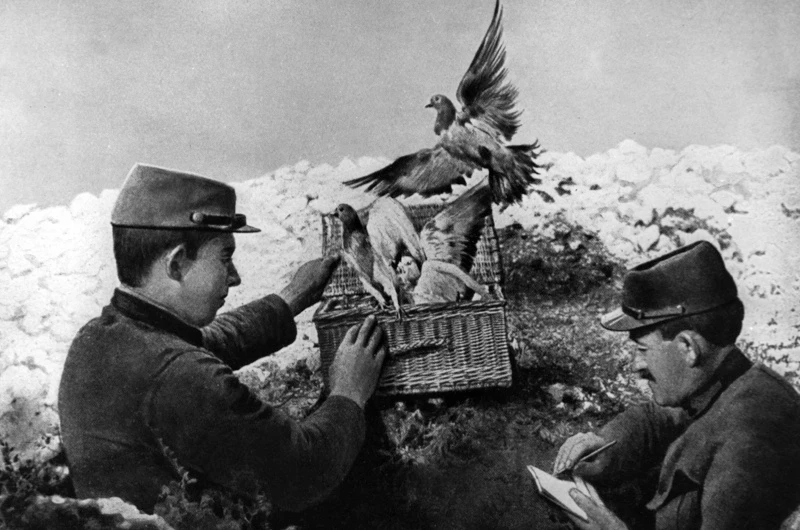For thousands of years before the invention of instant messaging and the Internet, people had to resort to more laborious methods of keeping in touch.
The simplest and longest-standing method of communication was writing letters and having them hand-delivered, but some individuals sought to eliminate the human component.
As a result, earlier civilizations relied on homing pigeons for long-distance communication, much as we depend on wireless networks today.

Carrier pigeons
Carrier pigeons are a type of homing pigeon that has been used throughout history to deliver messages over long distances.
These birds have an innate sense of direction and can fly at speeds that exceed 60 miles per hour in good wind, making them ideally suited for messenger duty.
Although carrier pigeons are no longer used as frequently as they once were, these birds continue to fascinate people with their unique ability to find their way home over hundreds or thousands of miles.
For example, in 1931, a pigeon released in France returned 24 days later, traveling 7,200 miles to its home in French Indochina.
Messenger Pigeon history dates from ancient Greece (where they were used to spread the news of major events like the Olympic Games) up until modern-day wars. During both World Wars alone, hundreds were employed by military forces worldwide, needing contact updates on battle progress.
Reasons why pigeons became important mail carriers
While it was efficient, couriers on horseback or foot were prone to dishonesty, accidents, delays, and a lack of confidentiality. As a result, a more dependable and faster delivery system was needed.
Pigeons became the preferred delivery system for many reasons.
- They are simple to deal with because of their docility.
- Pigeons are easy to capture, reproduce quickly, and are reliable. Particularly, rock pigeons were selected and crossed to make homing pigeons with better navigating instincts.
- Above all else, they have a stellar reputation for being excellent navigators.
How they work
Carrier pigeons are bred for their strong homing instinct — a strong desire to return to their home where they were born and nurtured.
That means they always fly home and not to any other place. Experts believe pigeons use a combination of navigational cues and landmarks to return to their nests.
Innate Compass
Pigeons have internal magnetic “compasses” near their eyes and noses.
Generally, birds are equipped with internal compasses that allow them to navigate using external cues such as the sun’s location during the day, the arrangement of stars at night, and the Earth’s magnetic field.
Birds can use their compass as a navigational tool to go to a general region but not to specific locations within that area.
Strong Magnetoreception Skills
Pigeons have incredible magnetoreception abilities that function in unison with their internal compasses.
Magnetoreception is the capacity to sense and orient oneself in response to the Earth’s magnetic fields. Rock pigeons with the greatest potential were bred to produce powerful and dependable homing pigeons!
Strong sense of smell
Many studies have shown that pigeons depend on their sense of smell to navigate around.
This is why birds with served olfactory nerves are usually rendered inoperative.
Carrier pigeons rely heavily on their sense of smell to pick up on odors of volatile hydrocarbon gases in the air. For example, the concentration of a gas in the atmosphere might cause its odor to be stronger in certain locations than in others.
Using their Perception
Pigeons can pinpoint their home from short distances thanks to their keen eyesight and other cues indicating their familiar setting. Sometimes their navigation is as easy as following landmarks and man-made roadways.
Impeccable hearing
Pigeons can detect low-frequency sounds below 20 Hz that originate from the Earth. This theory proposes that pigeons create mental maps of their environment using these sound waves, which eventually aids in pigeons’ ability to navigate back to their homes.

